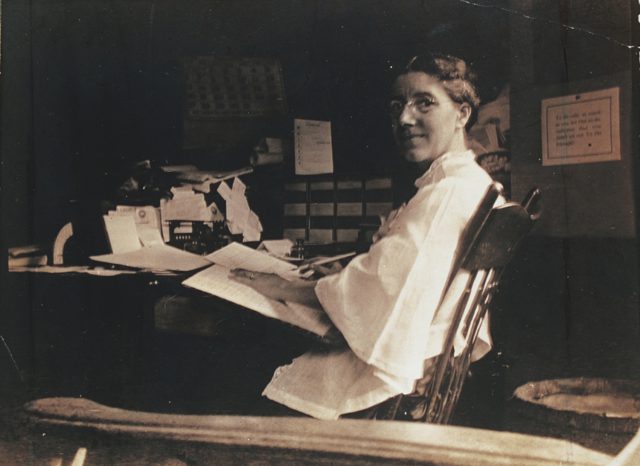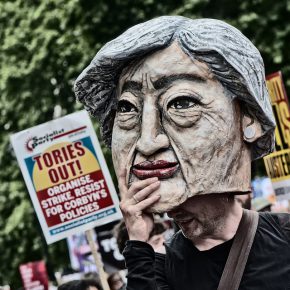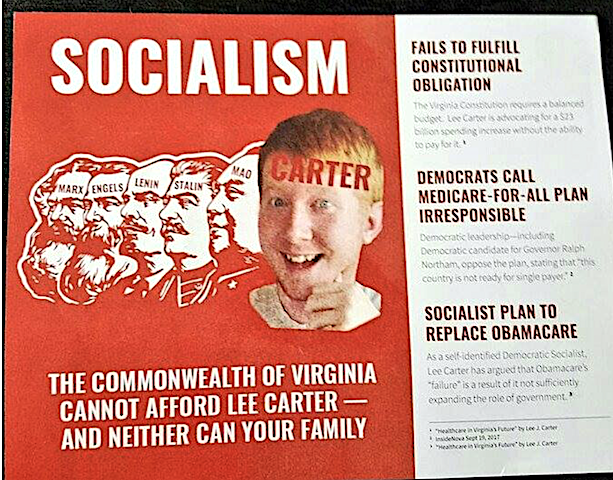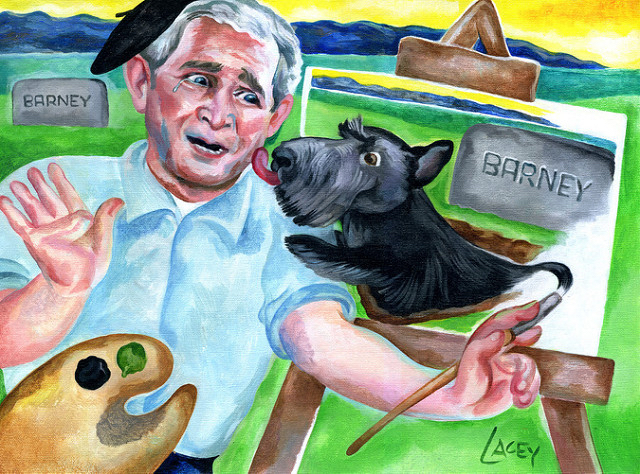The new publication of A History of American Working-Class Literature from Cambridge University Press provides a moment to ask some questions: Is it dead? And who reads it, especially when so few people in the contemporary United States want to understand themselves as working-class?
Judged as a movement in US academic life, some might think working-class literature dead. College and university classes on working-class literature and arts are few in number. They are never part of a core curriculum.
The number of teachers and scholars working in the field are quite few. Many have gray hair. They began working-class studies as 1960s and early 1970s radicals. Even fewer of these scholars actually come from working-class backgrounds, although with the expansion of low-paid contingent academic labor large numbers teachers are joining the working-class involuntarily.
My university, one of the largest public research universities in the United States, is proud that about 40 percent of its incoming in-state students come from low-income families. Yet there is no identifiable focus on working-class culture available to these students. Labor studies do not exist, but a Koch-funded center for ‘economic liberty’ does. There are only a handful of labor studies departments and working-class studies centers in the nation’s academic institutions, many of which have more to do with human resources management and labor relations than with working-class history and culture.
The Working-Class Studies Association is a minor though feisty academic organization, and the Working-Class Literature Association comprises a mailing-list and thinly-attended conference panel sessions. The small wave of scholarship that rediscovered and rescued proletarian literature – Daniel Aaron, Barbara Foley, Cary Nelson, Alan Wald – is fading. A handful of small journals carry the cause of working-class literature forward – Blast Furnace, Blue Collar Review, Workers Write!, and a few others – as do an array of small publishers such as Tia Chucha, Steel Toe Books, and Bottom Dog Press.
Certainly one reason that working-class studies have not proliferated in American universities is that most faculty come from the middle class. Although there may be little else on which I agree with Harold Bloom, who comes from a working-class family, he was no doubt correct when observed that he could count on one hand the number of Yale faculty with working-class backgrounds. Like some successful members of American society, tenured faculty and university administrators can be “poor mouths”. They recast a middle-class childhood as a story of impoverished beginnings. This rhetoric of political position seeks to identify with lack of privilege in order to rationalize current privilege. Class heavily inflects American academic life, yet it remains unacknowledged and often disclaimed as a formative force.
One of the most incisive responses I have heard came years ago from the novelist and academic Louis Owens, who was paired with Barbara Johnson of Harvard – both are now deceased — at a UC-Berkeley conference. After Johnson had spoken, Owens rose to say that he had listened to the recitation of the impressive educational credentials and career of his colleague, so he wished to mention that he had begun college at an equally distinguished institution, Cuesta Community College: “Go Cougars!” The audience and Johnson laughed but the sharp point got through: there is a massive difference between an elite and a working-class education.
The failure of working-class studies to proliferate is a structural issue rather than one rooted in personal histories, individual or collective. The major obstacle lies in the institutional self-definition of neo-liberal universities. Public universities conceive their purpose as contributing to middle-class economic growth rather than any focus on labor and its culture. One attends university in order to stop being working-class, even though new college graduates may end up earning considerably less than a well-established, trained technical worker. Still, higher-education access based on the commodification of education and provision of student loans carries a promise of class mobility, so those who hope for rewards from capitalism set eyes forward and not backward. In reality, however, the working-class represents the future for most.
By any reasonable standard, working-class studies and literature in US universities present a negligible threat to a Trump administration that outdoes the Gilded Age for its origins within, reliance upon, and service to a corrupt plutocracy. So is a scholarly volume like A History of American Working-class Literature an intellectual tombstone for a movement whose time has passed?
It is easy to answer with a brave, fighting ‘No!’ It is less heartening to respond that working-class literature always has been a tenuous enterprise of little or no consequence to the centers of US political power. Working-class literature foremost has been about working people speaking to themselves, their families, friends, peers, and a few more readers if they are lucky. It sustains people through a shift, as when Lucy Larcom and her friends pasted small pieces of poetry to the bottom of mill room windows in Lowell, Massacusetts during the 1840s. The human capacity for self-expression constitutes self-defense for working people who sell their labor and lives. That conversation can lead to political mobilization, but that is a less common occurrence.
This Cambridge History volume is at the critical end – or what I like to call the ‘shitter end’ – of a literary digestive process. It is the work of a few middle-class academics writing about the working-class, or that is, people like me. We earn our salaries by writing about the lives of people who sweated repetition and boredom to earn their bread. We sit in home studies, research libraries, or pleasant cafes producing the scholarship that explains labor experiences that, if they were our own, would make our lives desperate wrecks. In short, we can write about hard labor because we do not do it. Despite this class dissonance, scholarship in working-class literature explores democratic aesthetics in ways that open public discussions and help support teachers who pursue this in syllabi.
What this essay collection accomplishes is to establish a grand overview, beginning with the deep historical roots and widespread presence of working-class writing from the American colonial period forward. Alongside the massive genocidal transport of African slaves, a quarter-million English settlers arrived as either bound laborers or convicts. Matthew Pethers describes how these transportation narratives helped provide themes that were to characterize American working-class literature, such as individualism and middle-class values of family, home, and stability. A few transportation stories such as Defoe’s 1722 novel Moll Flanders – based on a real deportee to Virginia, a pickpocket named Moll Flanders – achieved popularity. Some were potboilers such as Virtue Triumphant, or Elizabeth Canning in America (1757), based on a notorious trial of a maidservant found guilty of perjury for reporting a sexual assault and sentenced to seven years transportation to the American colonies. All of them testify to the literature of confinement as foundational to American literature.
That confinement appears in both metaphoric and literal senses in such mid-nineteenth-century works as Frank Webb’s The Garies and Their Friends (1857), Harriet Wilson’s Our Nig (1859), and Rebecca Harding Davis’s Life in the Iron Mills (1861). In these novels and many more, working people experience America as confinement by class or race, not as freedom. For Hugh Wolfe, the iron foundry worker in Davis’s novella, class barriers refuse to admit his intrinsic humanity and lead to his suicide in prison. The Lynn shoemakers who went on strike in 1860 carrying banners “We are not slaves” drew on a rhetoric that condemned an absence of freedom – for whites, at least – as intolerable.
The history of working-class literature records successive rebellions against social confinements; deprivations of freedom; class, race, and gender barriers; and labor exploitation. Equally, as a chapter by James Catano reminds, it is a literature that responded to poverty with stories of utopian societies that overcame oppression and established a just order. Edward Bellamy’s Looking Backward (1888) is part of a utopian tradition that leads to Susan Perkins Gilman’s Herland (1915), and on towards Marge Piercy’s Woman on the Edge of Time (1976). It is a literature that provided a vision of what an unclassed world might be.
The continuity and diversity of working-class writing is clear from chapters on worker reading habits; farm fiction from the Progressive era to the Dust Bowl; proletarian women writers such as Tillie Olsen, Meridel LeSeur, and Muriel Rukeyser; labor songs; workers’ theater; prison literature; globalization and working-class literature; and narratives of deindustrialization. These novels, poem, and plays engage directly with working people, rather than condescend to them and regard them as tragic figures needing ennoblement as novel characters such as Edith Wharton does in Ethan Frome. Rather, the social threat posed to class hierarchies comes when we listen to working people speak and write their minds.
The issue is not the absence of working-class expression but the absence of attention. Some might argue that racial, gender, or other identities have come to subsume working-class status. That is an argument that avoids the role of labor in construction of any identity, treating it as a secondary and derivative characteristic. It parallels similar arguments that trade unions are less relevant in a postmodern service economy and that other loci of social organization have assumed primacy. Contemporary capitalism has learned to assimilate, manage, and market identities. Well-organized labor is the bottom-line threat, not identities glad-handed through corporate diversity programs. As capitalism’s demands for cheaper and cheaper labor squeeze more people out of the American middle class and into poverty-class lives, working-class culture looks like the future.
Photographs public domain. Published under a Creative Commons license.






